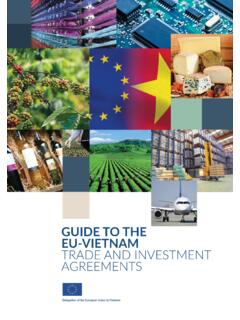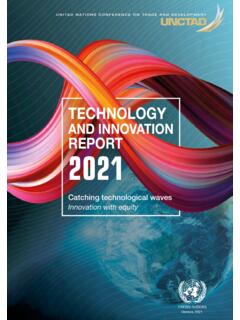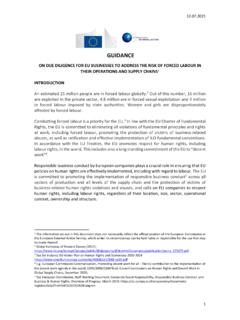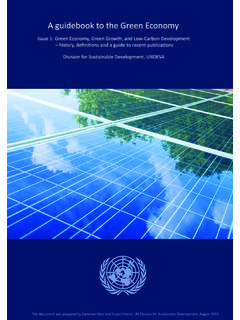Transcription of THE ECONOMIC SIGNIFICANCE OF NATURAL ... - OECD.org - …
1 THE ECONOMIC SIGNIFICANCE OF NATURAL RESOURCES: KEY POINTS FOR REFORMERS IN EASTERN EUROPE, CAUCASUS AND CENTRAL ASIA EAP Task Force THE ECONOMIC SIGNIFICANCE OF NATURAL RESOURCES: Key points for reformers in Eastern Europe, Caucasus and Central Asia ORGANISATION FOR ECONOMIC CO-OPERATION AND DEVELOPMENT the oecd is a unique forum where governments work together to address the ECONOMIC , social and environmental challenges of globalisation. the oecd is also at the forefront of efforts to understand and to help governments respond to new developments and concerns, such as corporate governance, the information economy and the challenges of an ageing population. The Organisation provides a setting where governments can compare policy experiences, seek answers to common problems, identify good practice and work to co-ordinate domestic and international policies.
2 the oecd member countries are: Australia, Austria, Belgium, Canada, Chile, the Czech Republic, Denmark, Estonia, Finland, France, Germany, Greece, Hungary, Iceland, Ireland, Israel, Italy, Japan, Korea, Luxembourg, Mexico, the Netherlands, New Zealand, Norway, Poland, Portugal, the Slovak Republic, Slovenia, Spain, Sweden, Switzerland, Turkey, the United Kingdom and the United States. The Commission of the European Communities takes part in the work of the oecd . EAP TASK FORCE The Task Force for the Implementation of the environmental Action Programme for Central and Eastern Europe (EAP Task Force) was established in 1993 at the Environment for Europe Ministerial Conference in Lucerne, Switzerland. Its Secretariat was established at the oecd . Since its creation, the EAP Task Force has proven to be a flexible and practical avenue for providing support to environmental policy reforms and institutional strengthening in the countries of the region.
3 More detailed information about Task Force activities can be found on its website at: This report is also available in Russian under the title: ЭКОНОМИЧЕСКОЕ ЗНАЧЕНИЕ ПРИРОДНЫХ РЕСУРСОВ: КЛЮЧЕВЫЕ СООБРАЖЕНИЯ ДЛЯ РЕФОРМАТОРОВ СТРАНАХ ВЕКЦА OECD (2011) No rep rod u c ti on , c op y, t ran smi ssi on or t ran sla ti on of t hi s pu b lic at i on ma y b e mad e wi t h out wri t t en p ermi ssi on . Ap p li c a ti on s sh ou ld b e sen t t o OE C D Pub li sh in g: rig ht s@o ecd .o rg or by fax (+33-1) 45 24 13 91. Permission to photocopy a portion of this work should be addressed to the Centre Fran ais d exploitation du droit de copie, 20 rue des Grands-Au gu st i n s, 750 06 Pa ri s, Fra n c e 5 FOREWORD NATURAL resources, both renewable and non-renewable, and ecosystem services are a part of the real wealth of nations.
4 They are the NATURAL capital out of which other forms of capital are made. They contribute towards fiscal revenue, income, and poverty reduction. Sectors related to NATURAL resources use provide jobs and are often the basis of livelihoods in poorer communities. Owing to this fundamental importance of NATURAL resources, they must be managed sustainably. Government plays the essential role in putting into place policies that ensure that resources contribute to the long-term ECONOMIC development of nations, and not only to short-term revenue generation. High-quality institutions in the present, and planning for the future, can turn the so-called resource curse into an opportunity. The current paper discusses both the ECONOMIC importance of NATURAL resources and how, by creating an adequate incentive framework, governments in Eastern Europe, Caucasus and Central Asia (EECCA) can contribute towards maintaining the ECONOMIC benefits of NATURAL resources use in the long-term.
5 The raising demands to establish institutions that reconcile ECONOMIC and environmental objectives of NATURAL resources use in a way that does not marginalise the poor was the starting point for developing this document. Its preparation was part of a project in Georgia though the results of work on synthesising international experience will clearly benefit other Eurasian countries in transition and emerging economies more generally. Decision-makers in environmental , ECONOMIC , and sector-specific ministries in EECCA are the main target audience for this document. Being a capacity development tool by its nature, the document responds, among other things, to the need of permanently re-investing into individual capacity building against the background of high staff turnover within public administration bodies in EECCA. The paper is one of the outcomes of the oecd work to support the integration of environmental and ECONOMIC policies in the Eurasian transition economies, which is carried out under the umbrella of the Task Force for the Implementation of the environmental Action Programme (EAP Task Force).
6 It draws from several OECD publications, including, most importantly, two OECD environmental Outlooks, the oecd Green Growth Strategy and the NATURAL Resources and Pro-Poor Growth book, published as part of the oecd s Development Assistance Committee s Guidelines and Reference series. The EAP Task Force was established at the Lucerne Environment for Europe Ministerial Conference in 1993 in order to assist the environmental reconstruction of transition economies based on sound ECONOMIC , governance, and financing principles. OECD, with its significant experience of policy integration , was considered well placed to provide such assistance. The main mission of the EAP Task Force since its establishment has been: (i) promoting the integration of environmental considerations into the processes of ECONOMIC , social and political reform; and (ii) upgrading institutional and human capacities for environmental management.
7 The paper was developed in early 2011 by a team of experts put together by Prospect C&S , Belgium. The lead author was Alexios Antypas (Central European University, Budapest, Hungary), supported by Robert Atkinson, Remo Savoia (Prospect C&S) and Stephen Stec (Central European University). Angela Bularga from the oecd secretariat provided general guidance as part of this process. Financing for this work was provided by the government of Norway, as part of their support to governance and environmental reforms in Georgia. 6 TABLE OF CONTENTS CHAPTER 1. THE ECONOMIC SIGNIFICANCE OF NATURAL RESOURCES .. 9 Contribution towards fiscal revenue, income and poverty reduction .. 9 Employment and job creation potential .. 10 Value of ecosystem services .. 11 Losses from poor NATURAL resource management .. 12 CHAPTER 2. ESTIMATING THE TRUE VALUE OF NATURAL RESOURCES.
8 13 Overview of the NATURAL Capital Approach .. 13 Renewable and non-renewable NATURAL capital .. 16 Towards environmental and resource 16 Overview of valuation methodologies .. 18 CHAPTER 3. POLICIES TO AVOID THE RESOURCE CURSE .. 20 The resource curse .. 20 Policies and institutions for avoiding the resource curse .. 22 Getting prices right .. 24 Enabling the shift towards more value adding activities .. 24 Introducing payments for ecosystem services .. 25 CHAPTER 4. GOVERNANCE STRUCTURES AND PROCEDURES TO AVOID THE RESOURCE CURSE .. 26 Structures and procedures to ensure transparency, inclusiveness, and accountability .. 26 Principles of multi-stakeholder 27 Effective intra-government organisation and multi-level governance .. 31 Structures and procedures to manage revenue from NATURAL resources .. 31 Integrated and adaptive decision making.
9 32 CHAPTER 5. A CHECKLIST FOR POLICY DIALOGUE .. 35 REFERENCES AND SELECTED 36 Figures Figure 1. The Pyramid of Capitals .. 14 Figure 2. The proportion of NATURAL capital to the other forms in low-income, middle-income, and high-income countries .. 15 Figure 3. Total ECONOMIC Value .. 19 Boxes Box 1. What services ecosystems provide? .. 11 Box 2. Strategies to avoid the resource curse: examples from Norway and Chile .. 23 Box 3. Levels of participation in NATURAL resources management .. 29 Box 4. The Lake Ohrid Conservation Project (LOCP): Demonstrating the Power of Stakeholder Participation .. 30 Box 5. The Komi Model Forest experience in Russia .. 33 7 KEY POLICY MESSAGES Sustainable NATURAL resources management is as much a question of sustainable ECONOMIC development as it is of environmental protection. While being the foundation of ECONOMIC activity and development, NATURAL capital (encompassing NATURAL resource stocks, land and ecosystems) is often undervalued and mismanaged.
10 This imposes costs to the economy and society, which may sometimes be considerable, shaving off several digits of annual increase in the gross domestic product of a country. Limited possibilities of substitution between NATURAL and physical capital and the fact that the quality of NATURAL capital can change abruptly also introduces the potential for bottlenecks which can substantially reduce growth. Sustaining renewable resources largely concerns conserving the stocks of resources and their quality, as well as maintaining a quantity of steady flows over an indefinite period of time. Even though non-renewable resources cannot be sustained because of their finite stocks, countries using these resources can achieve sustainability by investing the revenues derived from them into other forms of capital. NATURAL resources have proven to be both opportunity and curse for nations endowed with them.


















